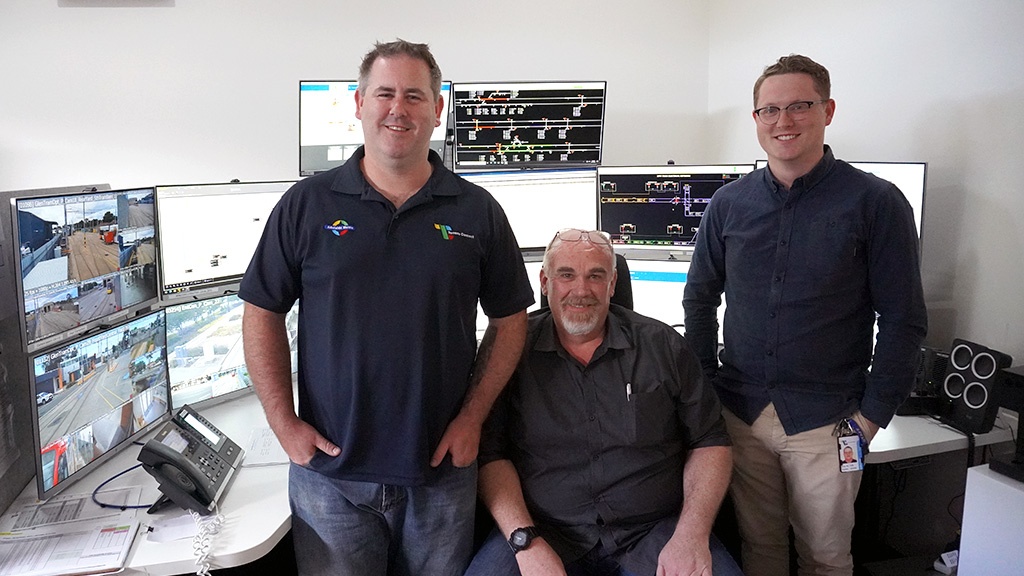“If it happens on the tram network, Tram Control either monitor it or control it.”

Trams run to a timetable – in fact, Torrens Connect is quite proud of its on-time running and it was recently noted by the Hon. Corey Wingard MP, Minister for Infrastructure an Transport that, “From July 2020 to March 2021 teams were punctual 99.4 per cent of the time, easily surpassing the benchmark of 95 per cent. On time reports were equally impressive averaging 98.9 per cent, well above the 95 per cent benchmark.”
But our operators don’t just hop in a tram and drive up and down like you might drive your car to the shops. It goes beyond just keeping to a timetable: every movement is controlled.
Trams (and trains) are subject to strict laws and rules so that anyone in or near the rail corridor remains safe, whether they be customers, operators or people who work in the corridor, such as our Rail Infrastructure Management Team. Much like an airport, trams cannot move out of depot or perform various movements without Tram Control giving the operator authority to do so.
Tram Control is a team of about a dozen Torrens Connect employees, most of whom are former tram operators. And there’s someone in the control room 24 hours a day!
But trams don’t operate 24 hours a day, you might say. Consider that the last tram arrives back into the depot at 1.28 am and the first tram leaves at 4.41 am – and there can still be a lot of work to do between those times!
During weekday peak hours, there are 21 trams moving on 36 km of network (if you do the maths, that’s one about every 1.7 km travelling in all directions), all stopping and moving off at irregular periods as customers board and disembark. Tram Control monitors all of their movements.
But there’s much more to Control than just watching trams move about. What happens if a tram breaks down? Or if there’s a work crew in a particular location? Or if a tram operator is running late (because they’re people too!) for work?
“We’re the clean-up crew,” says Senior Tram Controller Troy. “You’ve got sick leave, we take care of it. Any disorderly behaviour, we take care of it. You’ve got collisions, you’ve got late running trams, and it’s down to us to keep calm, keep everyone safe and rectify the situation.”
“It’s a lot more in depth than I originally thought,” says Shane who has been a tram operator for about 3 years and is currently learning to be a Tram Controller.
Fellow trainee Controller Craig agrees: “We’re only at the tip of the iceberg but it’s really opened up my eyes to all the stuff they do.”
Those unexpected duties include a lot of reports and data entry, as well as managing staffing and other issues.
“Just because the radio’s quiet, that means nothing,” says Craig. “The perception as a driver can be that there haven’t been any incidents today, so Control’s had an easy day. It’s not necessarily the case.”
“People don’t realise that Controllers might be trying to cover shifts if someone is absent,” says Troy. “Or if there are changes to procedures that are trying to be implemented to create better processes, so we have to determine whether or not that’s going to work.”
Late in 2020, Tram Control was relocated from a shared facility with the Operations Control Centre for trains. Both operators and controllers agree that this was a highly beneficial move.
“Previously, operators never saw us; they never knew our face. They just knew the voice and it was always the voice that called them up to say, ‘You do this’,” says Troy. “Now I think that mentality has changed; there are opportunities when you can see the face, you can put a voice to the face and it’s actually a person now.”
“There’s a lot more interaction now,” agrees Shane. “You can pop your head into Control and ask questions.”
“Instead of having to try and explain situations over the phone or the radio you can actually have a conversation with someone,” adds Troy. “You can have that closeness that if you know they’ve had an incident out on track you can pop your head out and say, ‘Hey, are you OK?’”
So what makes a good Tram Controller?
“Calmness. Ability to think outside of the norm,” says Troy. “Understanding that there’s very strict black and white but there’s a level of flexibility to work with as well. I think you need to be approachable but understand that you are also in that leadership position where the calls you make can determine outcomes not just for the network but sometimes for people’s career.”
When asked if there is a lot of pressure to ‘get it right’, Troy responds, “Absolutely. If you get it wrong, it’s potentially someone’s life.”
For Troy, knowing the tram operators is a vital part of the job.
“We have to make decisions all of the time, whether we deem a driver fit to continue after an incident, for example. That’s on us. We have to know the drivers, we have to know their voice. I listen to a driver and I can tell you straight away if they’re smiling on the radio or if they’re upset on the radio. That’s one of the key things we have to do.”
Despite, or perhaps because of, the challenges, Tram Controllers love their work.
Trainees Shane and Craig have both had experience in control rooms in other employment. “I loved my previous experience in a control room,” says Craig. “I enjoy driving trams, and seeing and hearing all the things that Control does, it appealed to me.”
Training to be a Tram Controller involves up to 12 weeks of theoretical and practical training and buddying before becoming qualified.
